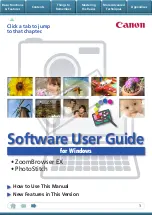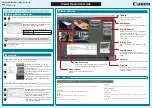
IDE
(1) Acronym for integrated drive electronics, a standard electronic interface used to connect mass storage
devices to a computer. The ANSI name for IDE is Advanced Technology Attachment (ATA). See also
SATA (serial advanced technology attachment)
. (2) Acronym for integrated development environment.
independent disk
A type of virtual disk that is not affected by snapshots. You can configure independent disks in persistent
and nonpersistent modes.
inventory
A hierarchical structure used by the vCenter Server or the host agent to organize managed entities. This
hierarchy is a list of all the monitored objects in vCenter Server.
LAN segment
A private virtual network that is available only to virtual machines within the same team. See also
team
,
virtual network
.
legacy virtual machine
A virtual machine supported by the product in use but not current for that product. For example, in
Workstation 5, you can use and create virtual machines for use in Workstation 4.x, GSX Server 3.x, or ESX
Server 2.x. New Workstation 5 features (such as clones, multiple snapshots, and teams) are not compatible
with the legacy virtual machines.
linked clone
A copy of the original virtual machine. The copy must have access to the parent virtual machine’s virtual
disks. The linked clone stores changes to the virtual disks in a separate set of files. See also
full clone
.
local cloning
The process of making a copy of a virtual machine residing in the system on which VMware vCenter
Converter is running, or making a copy of the physical machine itself for conversion to a virtual machine.
See also
remote cloning
.
LUN (logical unit number)
An identifier for a disk volume in a storage array.
migration
The process of moving a virtual machine between hosts. Unless VMotion is used, the virtual machine must
be powered off when you migrate it. See also
migration with VMotion
,
migration with VMware vCenter
Converter Standalone
.
migration with VMotion
The process of moving a virtual machine that is powered on and meets selected requirements, including
the activation of VMotion on both the source and target hosts. When you migrate a virtual machine using
VMotion, the operations of the virtual machine can continue without interruption. See also
migration with
VMware vCenter Converter Standalone
.
migration with VMware vCenter Converter Standalone
The process of moving a powered off virtual machine from a local or remote host, while reconfiguring the
file format, if necessary, to accommodate the destination machine. See also
migration with VMotion
.
NAT (network address translation)
In hosted networking, a type of network connection that enables you to connect your virtual machines to
an external network when you have only one IP network address and the host computer uses that address.
The VMware NAT device passes network data between one or more virtual machines and the external
network. It identifies incoming data packets intended for each virtual machine and sends them to the
correct destination. See also
bridged networking
,
vCenter Converter Boot CD (VMware vCenter Converter
Boot CD)
,
custom networking
,
host-only networking
.
NIC (network interface card)
An expansion board that provides a dedicated connection between a computer and a network. Also called
a network adapter.
User's Guide
82
VMware, Inc.
Summary of Contents for VCENTER CONVERTER EN-000158-02
Page 1: ...User s Guide vCenter Converter Standalone 4 0 1 EN 000158 02...
Page 4: ...Index 87 User s Guide 4 VMware Inc...
Page 6: ...User s Guide 6 VMware Inc...
Page 28: ...User s Guide 28 VMware Inc...
Page 36: ...User s Guide 36 VMware Inc...
Page 91: ...X Xen source 21 Index VMware Inc 91...
Page 92: ...User s Guide 92 VMware Inc...











































